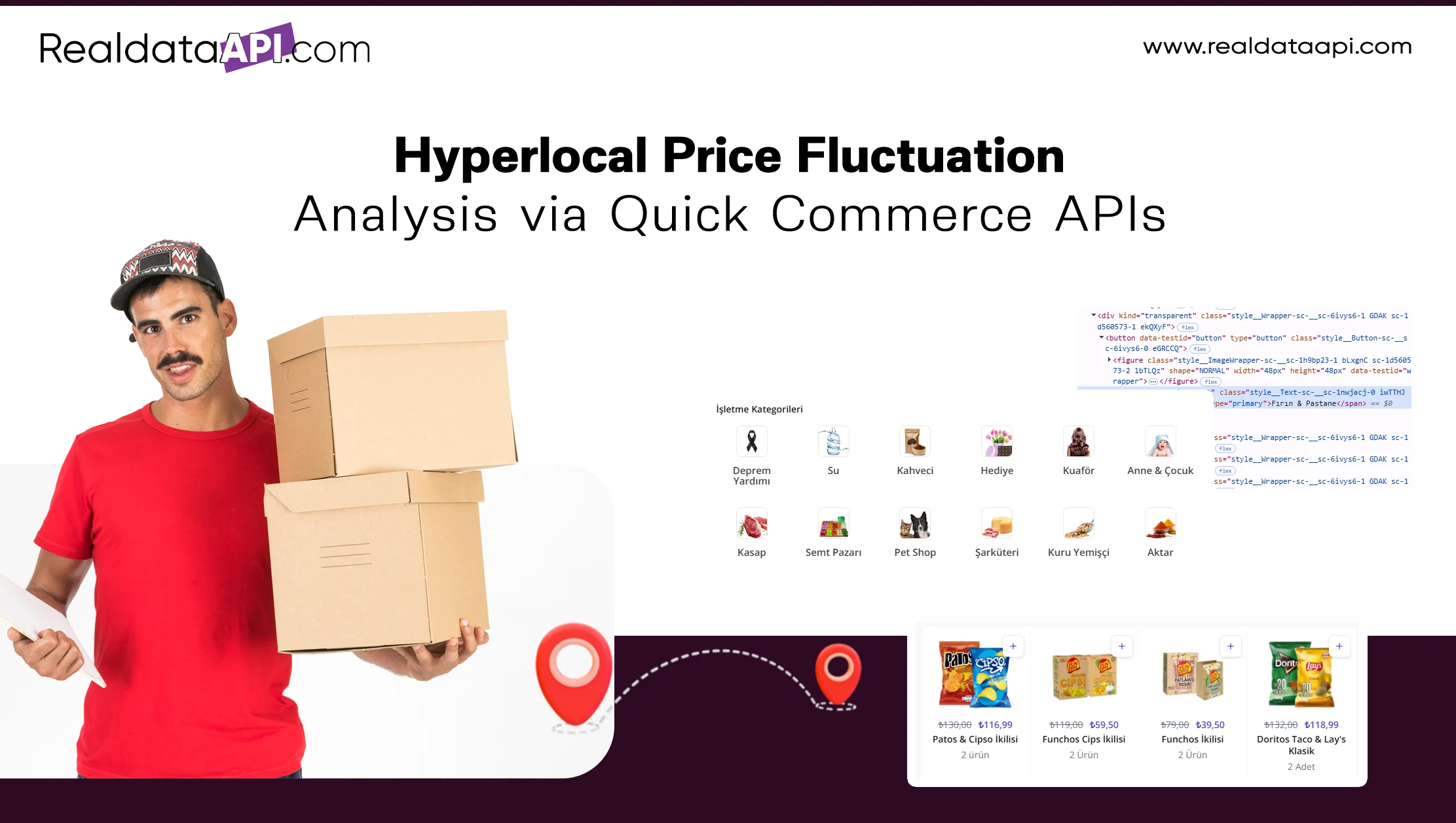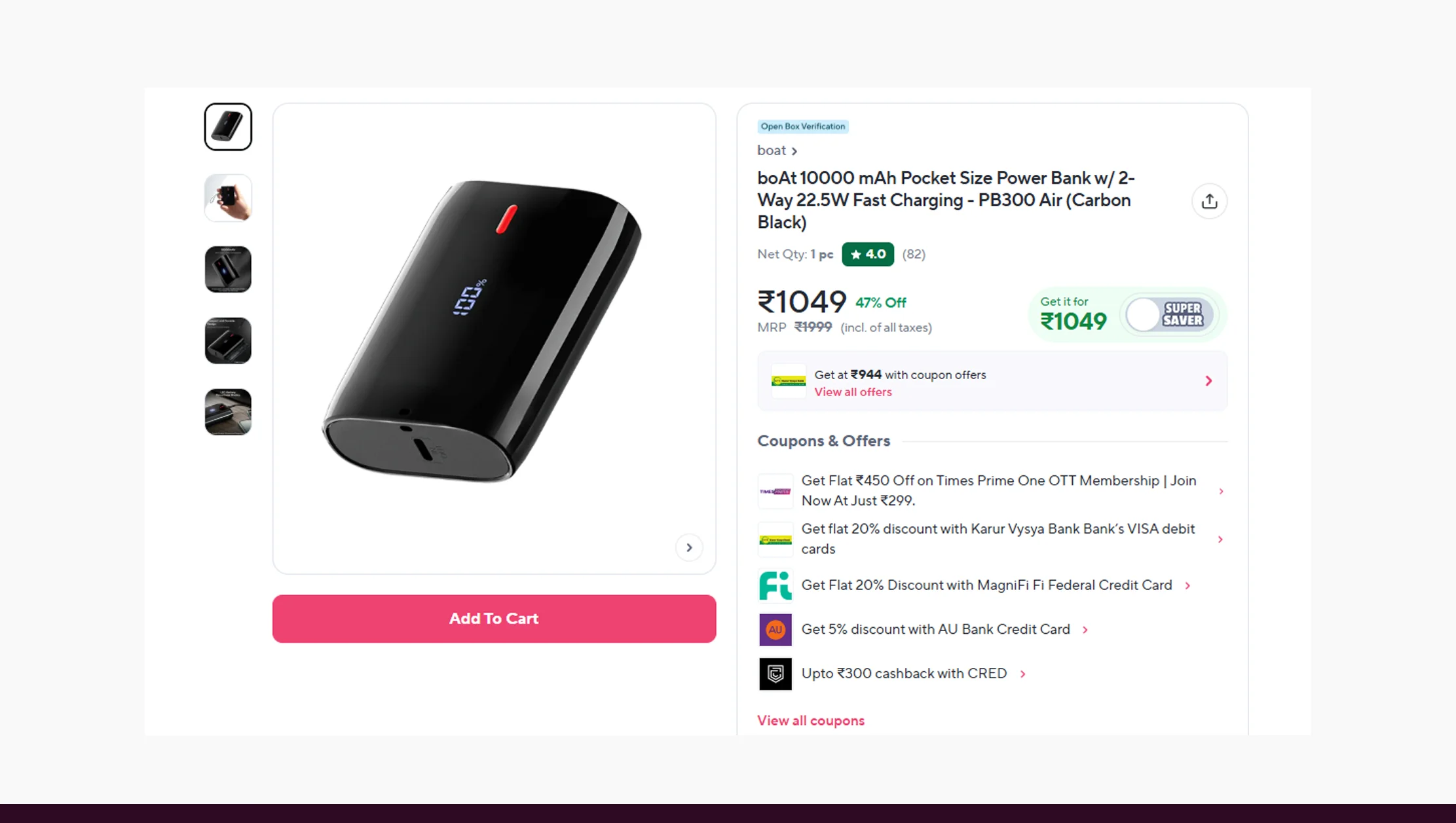


Analyze real-time pricing shifts in hyperlocal zones using Quick Commerce APIs. Track dynamic rates on Zepto, Blinkit, Instamart & more.

In today’s digitized retail landscape, hyperlocal pricing has become a key differentiator in how brands compete, market, and retain customers. Thanks to the rise of quick commerce platforms like Blinkit, Zepto, Getir, and Gorillas, pricing no longer follows a static national model—it’s dynamic, localized, and frequently updated based on supply-demand, local inventory, and customer behavior.
But how do businesses monitor, analyze, and respond to these hyperlocal price fluctuations? The answer lies in the use of Quick Commerce APIs and data scraping tools that offer real-time insights into item-level price changes across regions, cities, or even neighborhoods.

Hyperlocal pricing refers to adjusting product prices based on localized variables such as:
For example, a soft drink might cost ₹38 in Mumbai’s Andheri West but ₹42 in South Delhi on Blinkit, due to localized inventory costs and consumer trends.

The success of 10-minute delivery platforms depends on micro-warehousing and decentralized inventory management. This leads to different pricing strategies per location. Here’s why tracking these fluctuations is crucial:

Quick commerce apps like Blinkit, Zepto, Getir, and Gorillas rely heavily on APIs to deliver real-time pricing data to customers. These APIs fetch:
Because this pricing is calculated at the fulfillment center level, each API call varies by user’s location, device ID, or delivery address.
.webp)
Zepto operates from dark stores that cater to tightly zoned delivery areas. Each store prices items slightly differently based on cost structure and competition.
.webp)
Getir’s catalog pricing differs by country and city. Istanbul pricing is vastly different from London or Chicago.
Use Case: Conduct European city-level pricing parity analysis for global brands.
.webp)
Gorillas uses warehouse-specific pricing. The same product may be priced differently even in neighboring Berlin zones.

Scraping hyperlocal pricing data from quick commerce platforms requires advanced scraping methodologies due to:

Collect Zip Codes: Curate a list of all serviceable pin codes per city.
Build API Requests: Automate API calls with rotated geo-coordinates.
Extract Fields:
Store Data: Use Pandas DataFrame + CSV/JSON or push to a database.
Compare Pricing: Use visualization tools (Tableau, Power BI) to plot city-wise variation.

Platforms may detect scraping and block IPs.
Solution: Use delay timers, proxy rotation, and respect rate limits.
APIs may use dynamic headers, tokens, or JWT authentication.
Solution: Capture live headers using tools like Fiddler or Charles Proxy, and automate renewal.
Need to simulate different delivery zones for accurate pricing.
Solution: Use mobile device emulators with location override or GPS spoofing tools.

As competition in the quick commerce space intensifies, expect:
Hyperlocal price tracking is no longer optional—it’s essential for competitive survival, revenue optimization, and consumer trust.
Whether you’re a brand manager, retailer, pricing analyst, or investor, getting access to accurate, geo-targeted pricing data in real-time is crucial.
This is where Real Data API excels.
Real Data API provides enterprise-grade scraping and data extraction solutions specifically tailored for quick commerce platforms like Blinkit, Zepto, Getir, and Gorillas. From real-time hyperlocal pricing feeds to historical price movement analysis across cities, Real Data API delivers scalable, legal, and efficient pricing intelligence for businesses across sectors.
